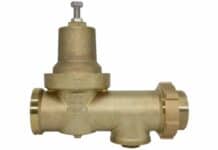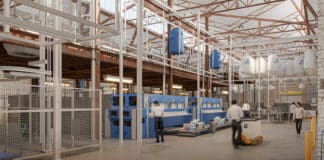Collaboration Between Facility Managers And Building Stakeholders
The benefits of digitalization and data-driven insights in accelerating progress on costs, reliability, runtime, and emissions reduction cannot be overemphasized.

The Biden administration issued the first-ever Federal Building Performance Standard in December 2022, requiring all federal government agencies to achieve net zero emissions in all of their facilities by 2045 and to remove on-site emissions in 30% of their building area by 2030.
For buildings owned, leased, or used by federal agencies, the U.S. federal government established the Federal Building Performance Standard (FBPS), a set of energy efficiency regulations. To minimize energy use, greenhouse gas emissions, and energy expenses, the FBPS’s goal is to ensure that federal buildings are planned, built, and operated energy-efficiently.
The FBPS is regularly updated to reflect changes in technology and construction practices and is created to be consistent with current federal, state, and municipal energy rules and requirements.
Digitalization and data-driven insights in facility management have the following advantages:
Cost Savings
Facility managers can find and remove inefficiencies, decrease waste, and minimize total operational costs by using digital technologies and data analytics.
Increased Dependability
Automating repetitive procedures using digital technology lowers the chance of human error and raises the general dependability of facility operations.
Increased Runtime
Facility managers may optimize equipment consumption, lower downtime, and lengthen the lifespan of assets by using advanced analytics and real-time monitoring.
Emissions Reduction
Facility managers can put plans into place to lessen their carbon footprint and meet sustainability objectives by keeping an eye on energy use and waste output.
Digitalization and data-driven insights provide several advantages that aid in raising the effectiveness, dependability, and sustainability of facility management operations for building performance standards.
Roles Of Facility Management In Building Performance
The technical performance of a building’s structural elements and the caliber of the amenities it offers together to determine how well it performs as a physical asset.
Building functionality, a building’s amenities, and how well a building supports activities inside it should all be considered when evaluating a building’s performance. Rating the effectiveness of a building’s qualities is often how its performance is assessed.
Buildings can be maintained properly for a lifetime when handled by a professional facility management company. However, facilities managers and directors are significantly handicapped if they don’t comprehend modern technologies.
Buildings and operations efficiency suffer when they rely on conventional methods of managing information like spreadsheets, paper plans, or just plain memory. The overall objective of the integrated facility management team is to operate efficiently and without wasting resources, time, or energy. They labor to maintain the HVAC system, the exterior, important plumbing components, and more in excellent working order.
The facilities teams enter the picture to contribute value throughout a building’s existence.
 Korede is the Director of Eliezer Workplace Management (Eliezer Group). He is a Chartered Administrator and seasoned Facilities Management Professional who holds the Facility Management Professional (FMP) certification of the International Facility Management Association (IFMA), USA, with over 15 years of experience across multiple business sectors.
Korede is the Director of Eliezer Workplace Management (Eliezer Group). He is a Chartered Administrator and seasoned Facilities Management Professional who holds the Facility Management Professional (FMP) certification of the International Facility Management Association (IFMA), USA, with over 15 years of experience across multiple business sectors.



















![[VIDEO] Job Order Contracting: Accelerating the Projects that Matter](https://facilityexecutivemagazine.kinsta.cloud/wp-content/uploads/2024/05/maxresdefault-324x160.jpg)
